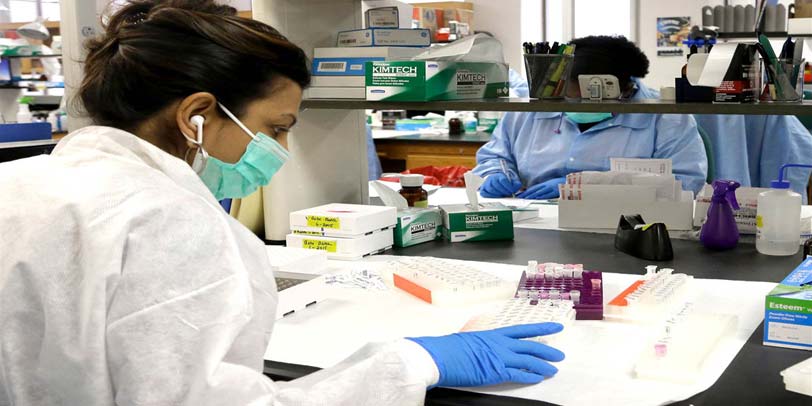Police crime labs in both Detroit and Baltimore have recently come under fire for shocking errors discovered in the testing, analysis, and use of forensic evidence.
Last week the Detroit police crime lab was shut down after an audit in June of the ballistics division revealed a 10% error rate in 200 firearms cases they reviewed. A fear that this error rate pervaded all divisions was the main reason for the closure of this chronically under-funded and over-worked lab.
The discovery in the ballistics divisions has put the integrity of all forensic evidence testing and analysis in Detroit at risk. And the ramifications of the lab closure could be far-reaching. Innocent people may have been wrongfully convicted from flawed forensic evidence leaving dangerous criminals free to commit more crimes.
In Baltimore, the chief of the police crime lab was fired last month after it was revealed that a dozen DNA samples had been contaminated by lab employees. Again the lab’s reliability was called into question last week when The Baltimore Sun reported that in at least nine cases police told crime lab technicians to disregard DNA evidence matching convicted criminals found at crime scenes.
Though the police department’s policy was recently changed so all DNA evidence matching convicted persons found at crime scenes will be turned over to the prosecutor’s office, it raises questions about the number of cases where the DNA evidence was simply ignored.
Forensic evidence, especially DNA evidence, is heavily relied upon as a means to not only convict the guilty but also protect the innocent. When flawed or false forensic evidence makes its way into the courtroom, the integrity of the entire criminal justice system is called into question. Individuals are at risk of being wrongfully convicted and the public’s trust in our system of justice is eroded.
Most troubling about the discoveries in Detroit and Baltimore is that the errors found are not uncommon. In fact, flawed forensic evidence is one of the leading causes of wrongful convictions. Faulty forensic evidence or testimony was a contributing factor in nearly sixty percent of the first 200 DNA exonerations.
Solutions to the problem of forensic error can be found in The Justice Project’s publication Improving the Practice and Use of Forensic Science: A Policy Review. Known sources of error in forensic testing and analysis are identified by profiling cases of injustice and researching state’s forensics statutes, as well as a model policy that outlines a structure of forensic laboratories that ensures the objectivity and reliability of forensic evidence are detailed in the policy review.
Though Detroit and Baltimore have taken important steps to rectify the situation in their respective states, it is not enough to prevent future error. Both cities must account for the systemic causes of forensic error in order to fix the flaws. Each jurisdiction should create an independent, transparent oversight commission responsible for conducting audits similar to that of the ballistics division in Detroit. An oversight commission would prevent widespread errors from occurring in the future by enforcing quality standards in the lab. Error rates in any division of a forensic lab should never reach the rate they have in Detroit.
Houston, which has had its own problems with crime lab errors, has been closed three times due to numerous forensic science flaws including loss and contamination of evidence to improper testing procedures and misread test results that have led to three wrongful convictions. But the city is taking an important step toward improving the accuracy of forensic evidence by utilizing independent, outside oversight. Just this week the police department asked the city council for funds to hire independent scientists to review the processes used at Houston’s DNA crime lab.
Another important way to prevent errors is through independence. Forensic laboratories across the country should be independent from law enforcement and prosecutorial agencies. Instead, nearly all state forensic labs are under the jurisdictions of law enforcement or the attorney general. As a result, analysts may come to see their role as part of the “crime-fighting team” rather than as neutral and objective agents of science. Influence from law enforcement is evident in Baltimore, where forensic labs were advised by police to limit the flow of potentially damaging DNA evidence to the prosecutor’s office and defense attorneys. Forensic science laboratories should be impartial agencies dedicated to scientific procedures that ensure accurate and reliable testing, and nothing else.
The lab closure in Detroit and discoveries in Baltimore show that forensic science is not infallible. However, simple reforms can be implemented to make it a more accurate science that can be trusted in the courtroom. The errors discovered in Detroit and Baltimore were preventable. With meaningful independent oversight and independence from law enforcement, forensic evidence and testimony can be a reliable and powerful tool for justice.

